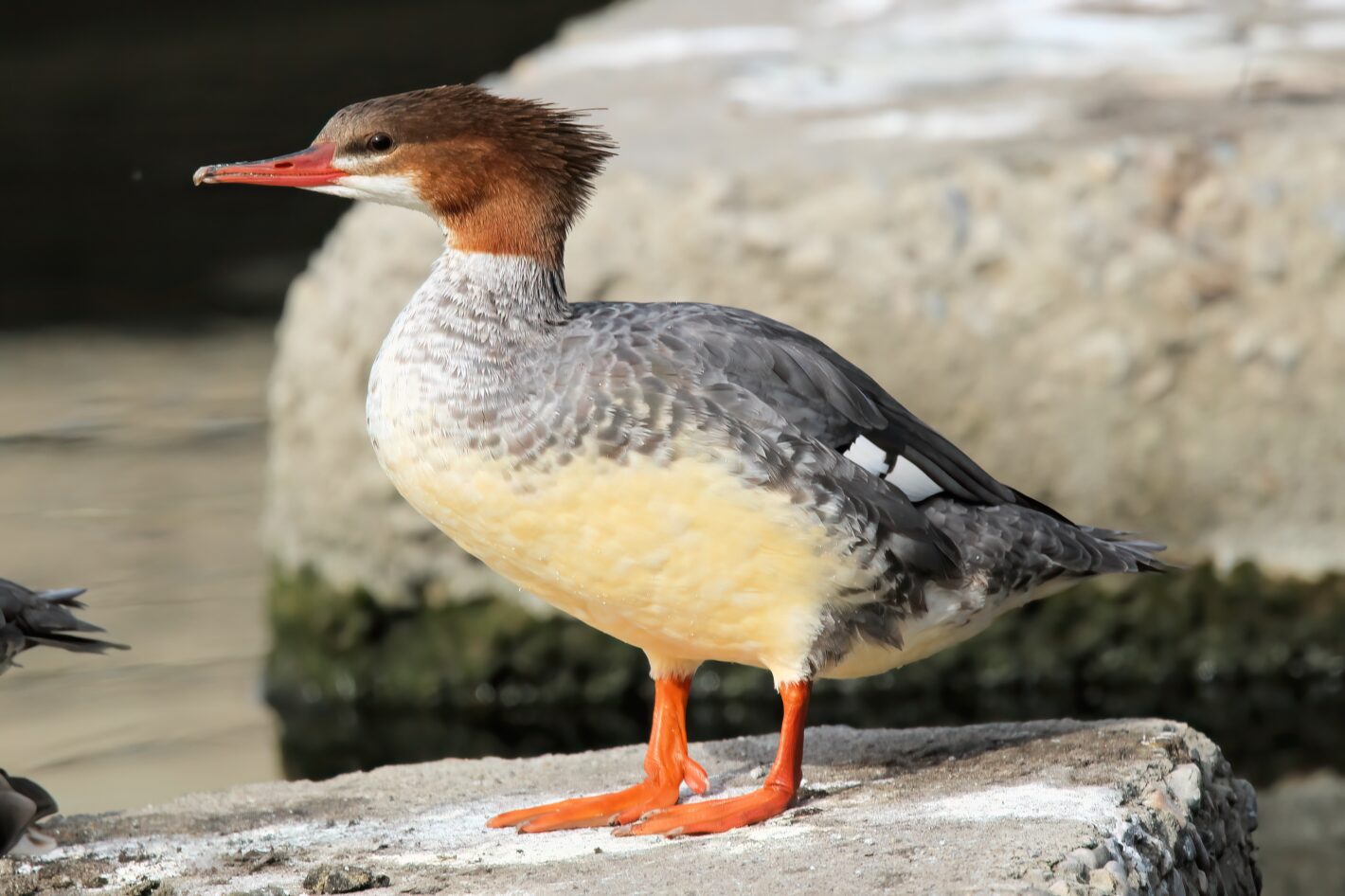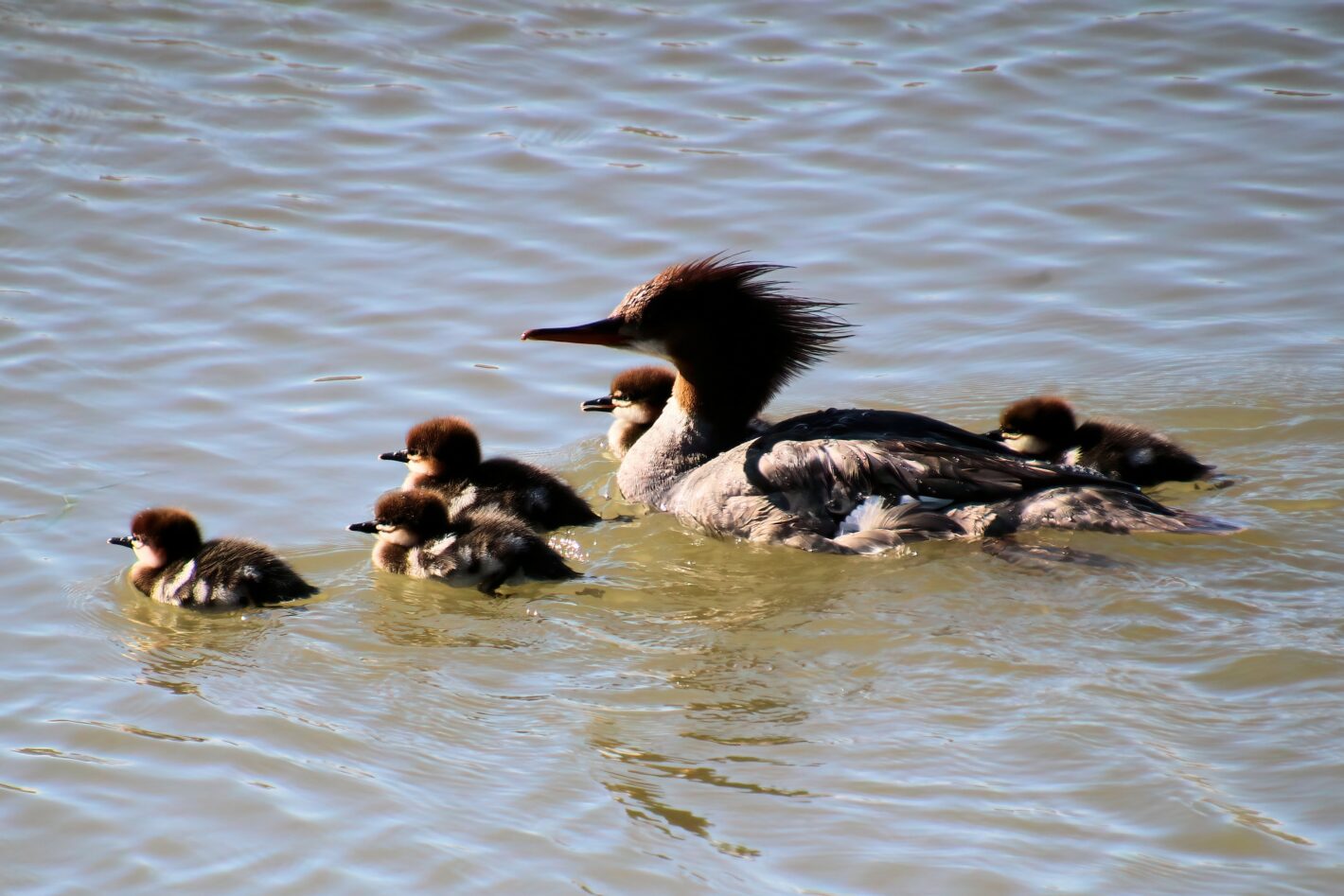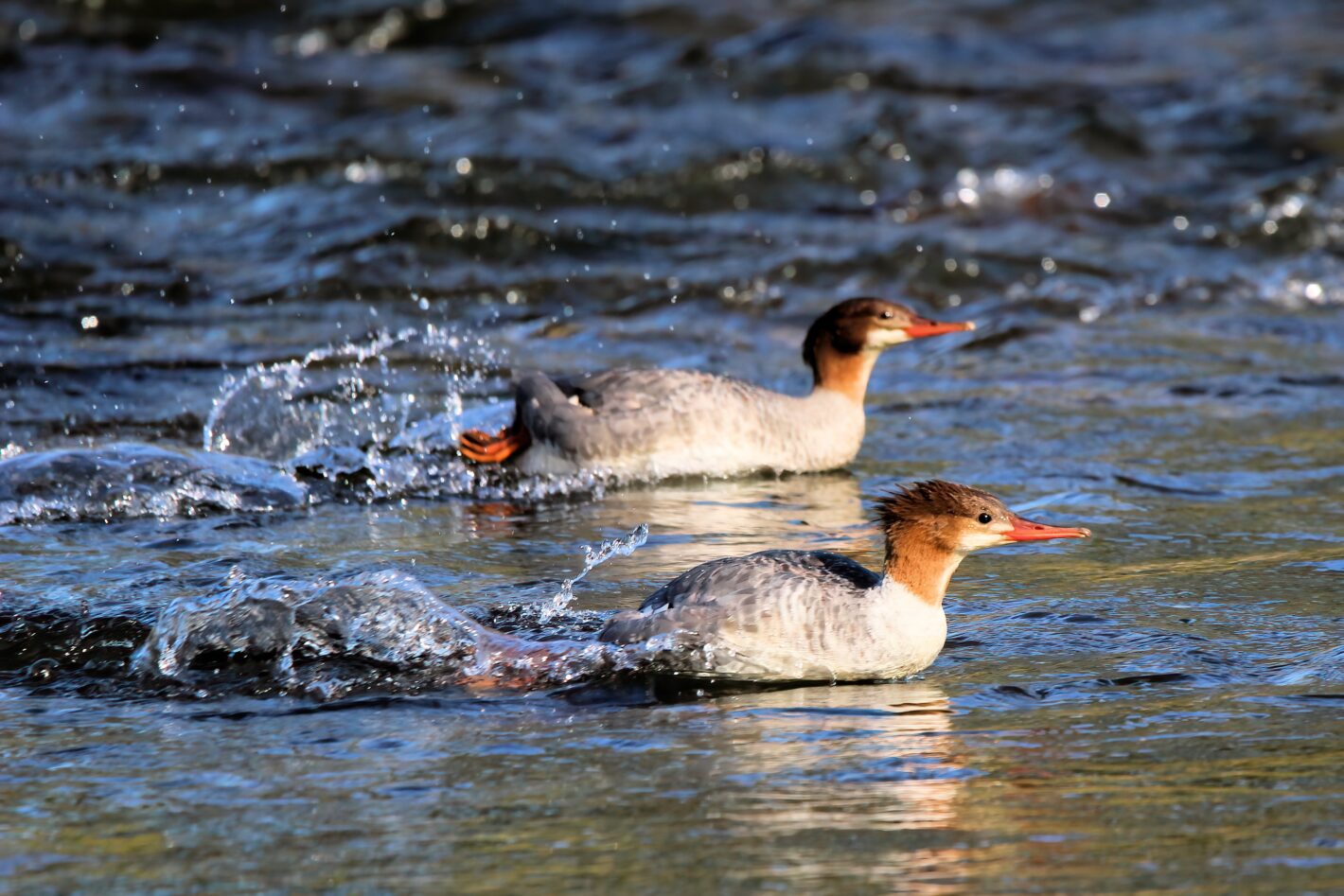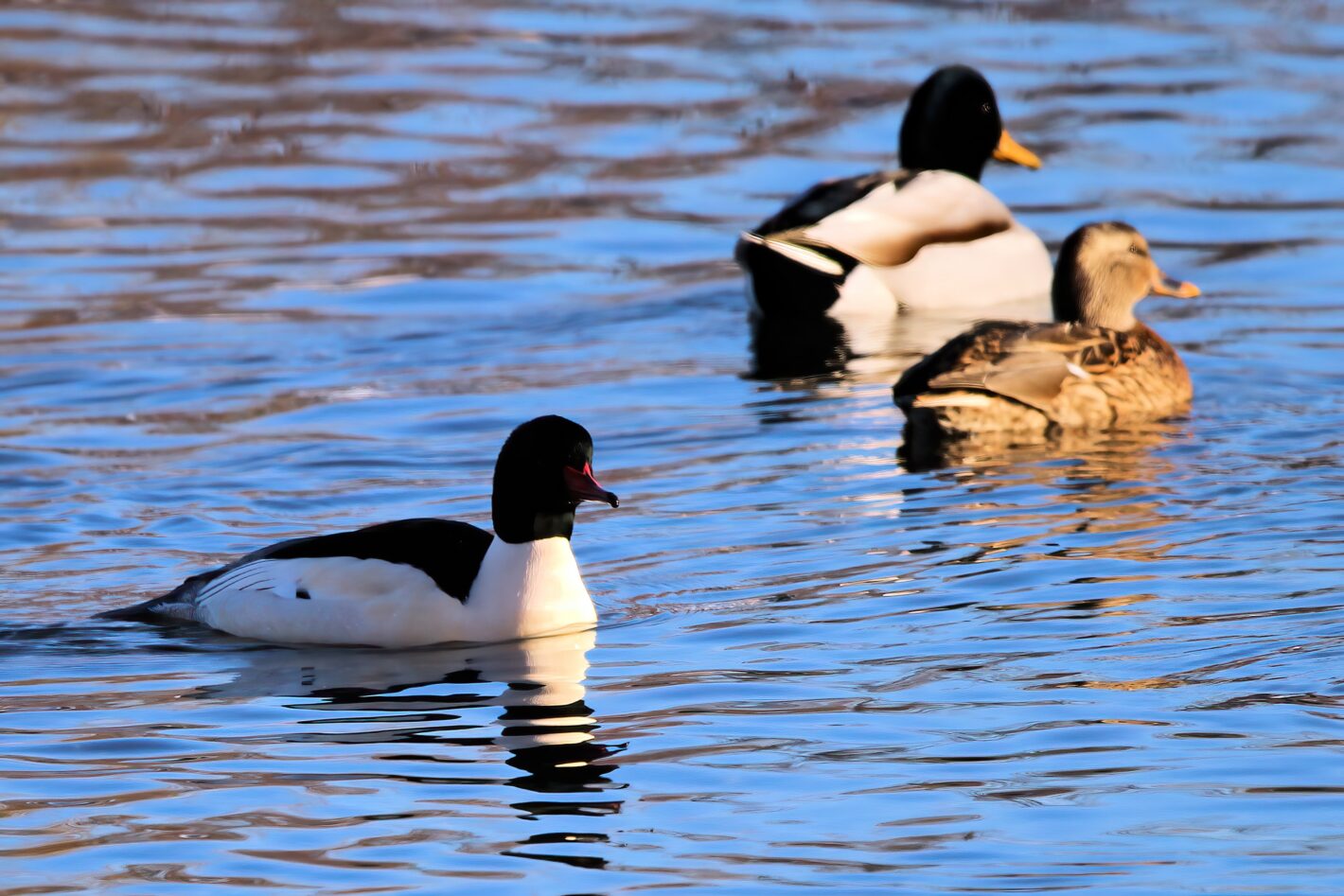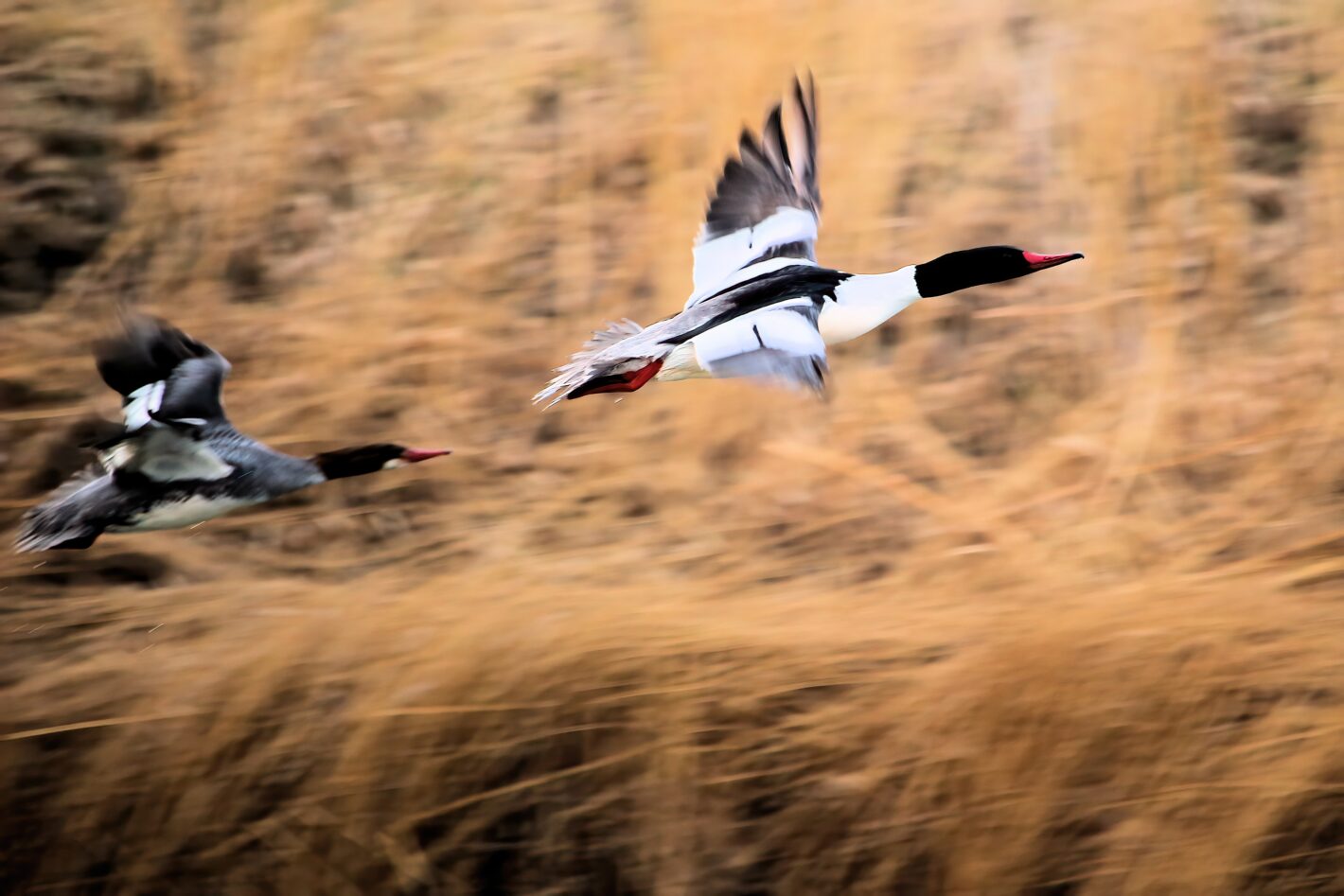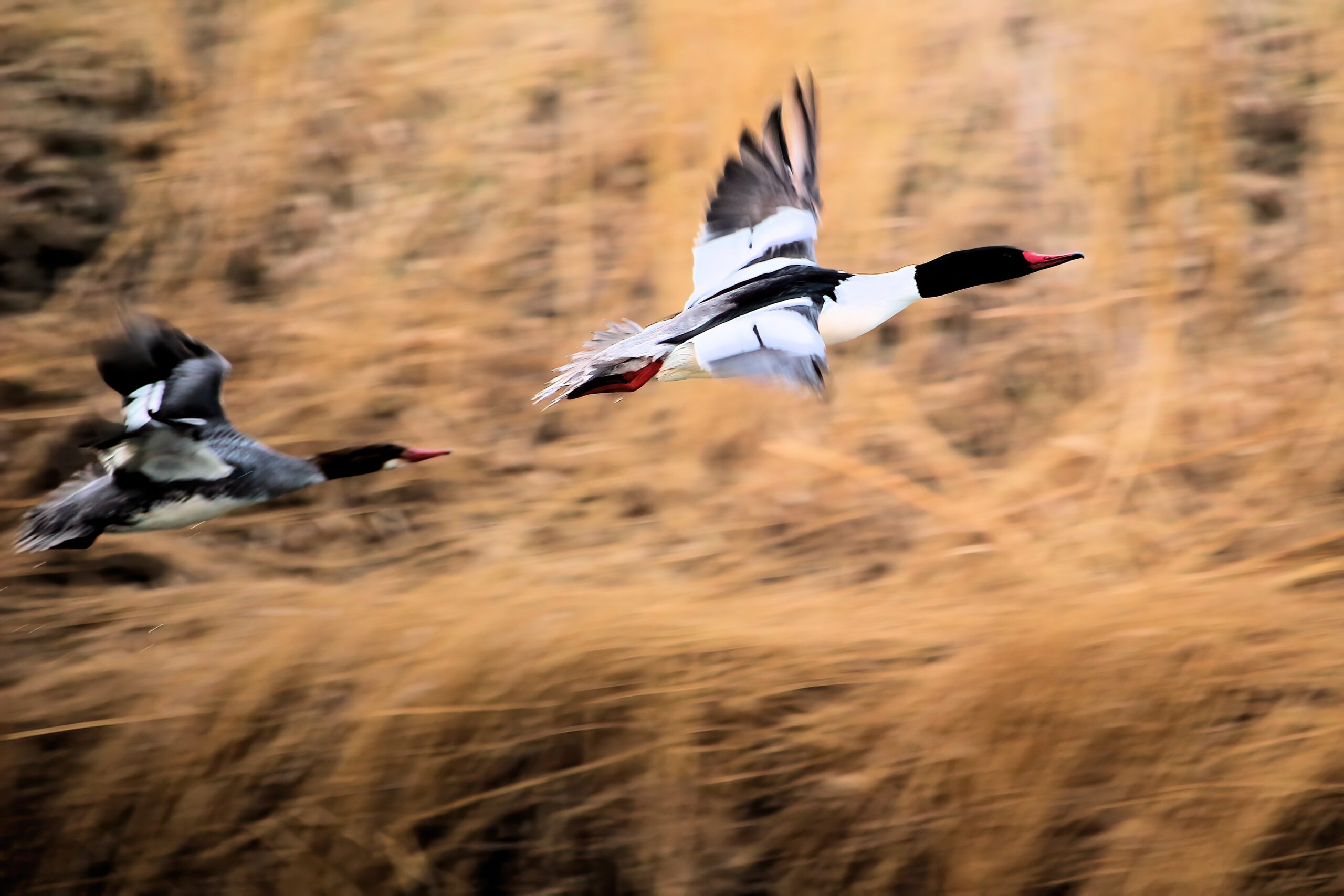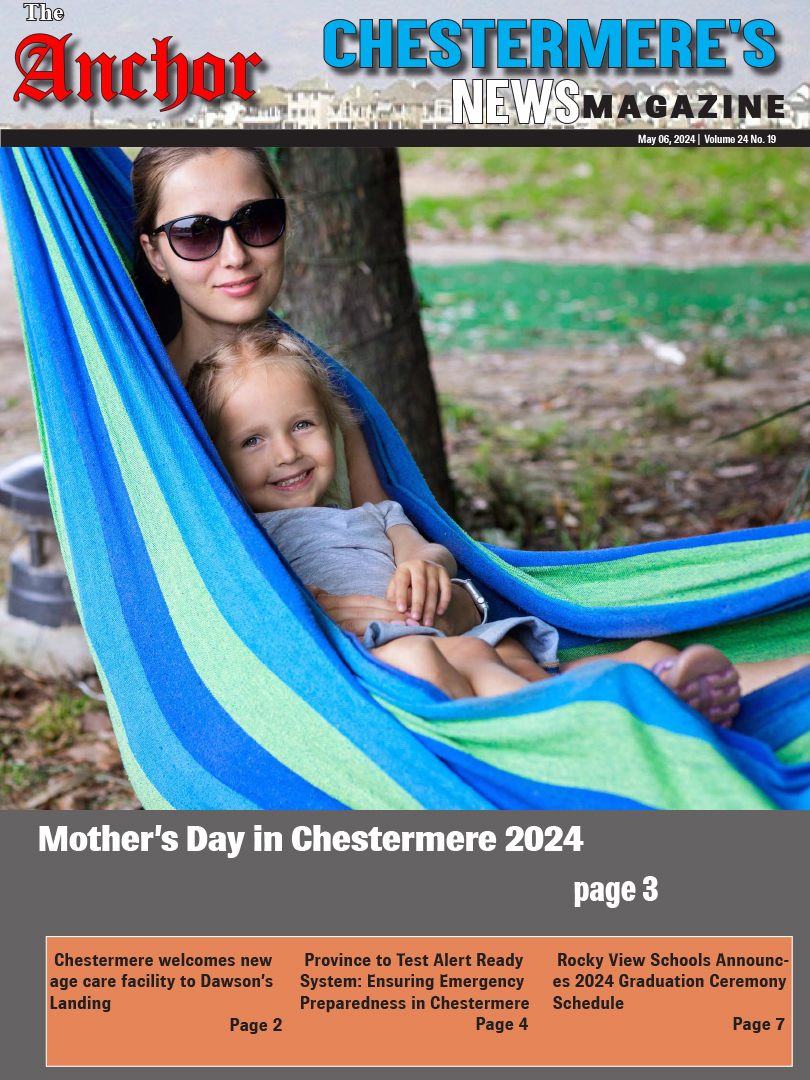May canoe paddle of Long Bay, a popular part of Cold Lake, provided an opportunity to enjoy the company of waterfowl. With my entry-level Canon Rebel paired with a 250mm zoom lens, I hoped to get close enough to click the shutter and begin my retirement hobby – birding.
As I paddled along the northeastern shore of Long Bay, a pair of large and elegant wildfowl slipped long the rock and gravel edges, slowly heading away from my canoe. As they moved on, my Canon set to “Auto”, had its shutter button pressed and both the male and female Common Mergansers were a part of my digital memory. In Latin, “merganser” translated to English means “plunging goose”, an apt reference to both the size and behavior of this unique member of the merganser family. Nearly 70cm long and weighing in over 2kg at maturity, mergansers will indeed catch your attention. Males are wonderfully colored, painted with a gleaming white body, topped with a dark, iridescent head. Female adults have a light grey body, white chest and a head that is a rusty-cinnamon hue, highlighted with a shaggy crest. Both male and female mergansers have a long, narrow bill with serrated edges, an excellent adaptation for capturing prey.
Although large in size, this merganser is a tree cavity nester, often seeking woodpecker holes in live or dead trees up to 30 metres in elevation and ideally within a kilometre or so of fresh water. Females will lay up to a seventeen eggs in such a location, incubating them for five weeks. Once hatched the juvenile mergansers leap where no merganser has leapt before, within two days of being born. They then follow the female down to the fresh water source to continue their lives.
Being able to dive for up to two minutes, Common Mergansers will pursue fish and aquatic invertebrates as key targets. However, mergansers also enjoy frogs, small mammals, some vegetation and birds on the dinner plate as well. These “plunging geese” will dive to depths of thirteen feet, using their narrow bills to probe river and lake bottoms and explore rock crevices for sustenance. Young mergansers will thrive on aquatic insects for the first few weeks of life,then switching to delectable fish.
Although Alberta’s mergansers migrate mainly to the west coast and to the United States, seeking open rivers and reservoirs to overwinter, Calgary’s Bow River, open year round, has become an additional winter residence for a few hardy mergansers. When airborne, both sexes display prominent white patches on their wings. It’s a pleasure to watch their sleek aerodynamic forms, rapid wing beat and low level flight over the Bow. Big and beautiful is truly eye-catching and helps move the winter blues along.
